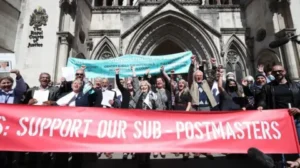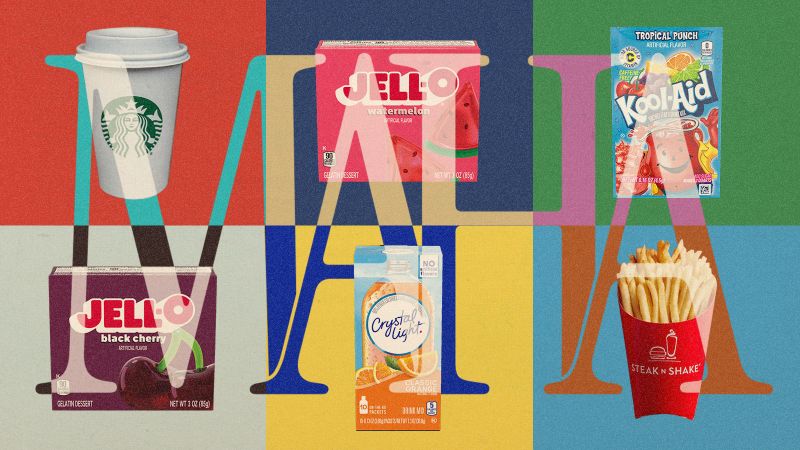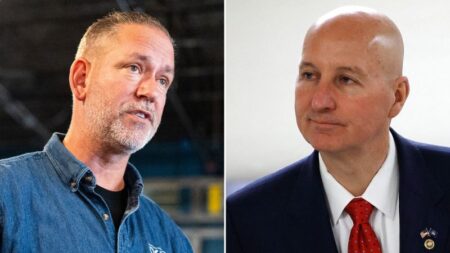Steak ‘n Shake, widely recognized for its indulgent milkshakes and burgers, may not initially resonate with the health-focused “Make America Healthy Again” (MAHA) movement. Headed by Health and Human Services Secretary Robert F. Kennedy Jr., supporters of MAHA advocate for a fundamental transformation in the American diet, emphasizing “clean” ingredients, a significant reduction in sugar consumption, and a rejection of artificial food dyes and seed oils, among other adjustments toward healthier eating habits.
Notably, despite its typical fare being considered at odds with MAHA’s principles, Steak ‘n Shake has garnered approval from Secretary Kennedy. This endorsement came on the heels of the chain declaring its intent to switch to beef tallow—a fat derived from beef, which aligns with MAHA’s dietary preferences—for frying its foods. The company’s influence even extended to the organization of a pop-up lunch event at the HHS headquarters, showcasing this culinary shift. The endorsement underscores a growing trend among food and agricultural entities who are publicly aligning themselves with the MAHA initiative, as they recognize Kennedy’s efforts to reformat American food policy.
As summer approaches, Kennedy plans to unveil the second part of a sweeping food policy initiative originally ordered by then-President Donald Trump. This initiative aims to address chronic health issues within the United States, building upon prior findings that identified environmental toxins, specific medications, and processed foods as primary culprits contributing to these health dilemmas. By focusing on dietary reform, the secretary is set to present new dietary guidelines specifically associated with MAHA’s vision, further propelling the movement toward a healthier America.
While consumer and food advocacy groups strive to contribute to these discussions, their interactions with HHS have shown mixed results. Some insiders express cautious optimism about engaging in dialogue with Kennedy’s team but hold reservations, citing the secretary’s history of promoting unverified theories that may overlook their perspectives. The anxiety among these groups heightened following Trump’s February executive order, which initiated a new strategy to combat chronic diseases, thereby facilitating the creation of the MAHA Commission to advise on addressing childhood chronic diseases.
As Kaiser’s team prepared its first report outlining major health threats, including insights on marketing and lobbying landscape, industry stakeholders, particularly from the oilseed and beverage sectors, scrambled to respond. Lobbying expenditures from groups like the American Beverage Association significantly increased, indicating an urgent need to influence forthcoming policy changes. Despite the anticipated industry pushback, these intervention efforts have yielded limited success thus far, particularly as some groups have gone public with grievances regarding their lack of engagement in the policy development process.
Despite navigating complex lobbying dynamics, major brands have begun to publicly embrace MAHA initiatives. For instance, Steak ‘n Shake announced that its fries would be prepared with 100% beef tallow — an apt illustration of its commitment to the movement. Meanwhile, Kraft Heinz aims to eradicate artificial dyes from staple products across its range, while Starbucks has expressed intentions to parse menus to align closely with MAHA ideals, promising clearer nutritional transparency.
In parallel to MAHA’s efforts, Kennedy has also emphasized revising the nation’s current dietary guidelines, which have evolved into cumbersome, extensive documents perceived to mirror industry interests. By advocating for a simplified four-page guideline, Kennedy aims to craft materials that are accessible to a wider audience, mainly parents and educators. However, as this initiative is emblematic of collaboration between HHS and the USDA, navigating jurisdictional complexities could hinder meaningful reform.
Past tensions between health and agricultural agencies primarily revolved around food safety regulations rather than overarching dietary policies. Presently, as both sectors attempt to cultivate a consensual approach to policy making under Kennedy’s MAHA, lobbyists from food and agricultural groups may ultimately find more success in engaging with USDA head Brooke Rollins, who has shown willingness to represent agricultural interests in ongoing discussions.
As stakeholders in this food reform movement evolve their strategies, illuminating the shared goal of enhancing public health while navigating the intricate political landscape poses both formidable challenges and opportunities for a healthier future in American cuisine.











